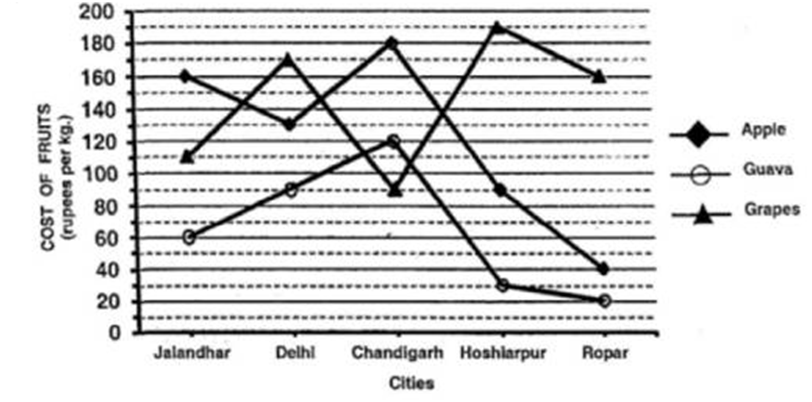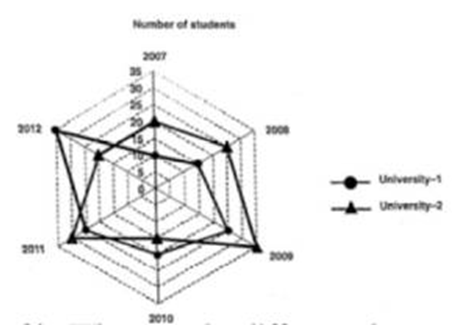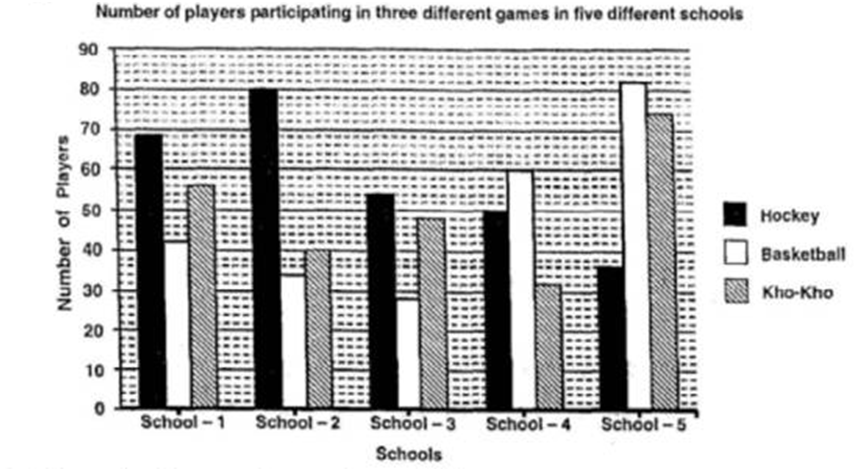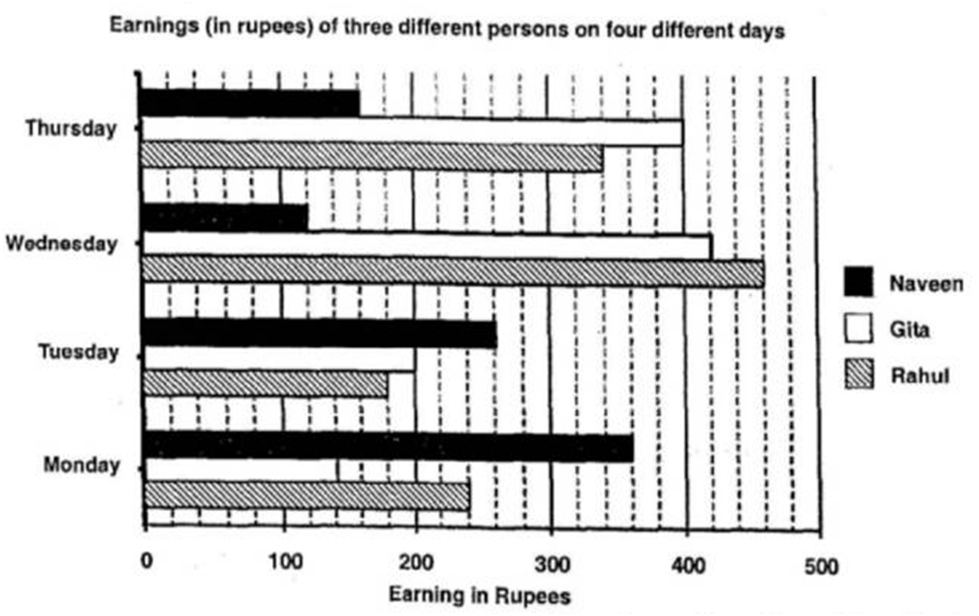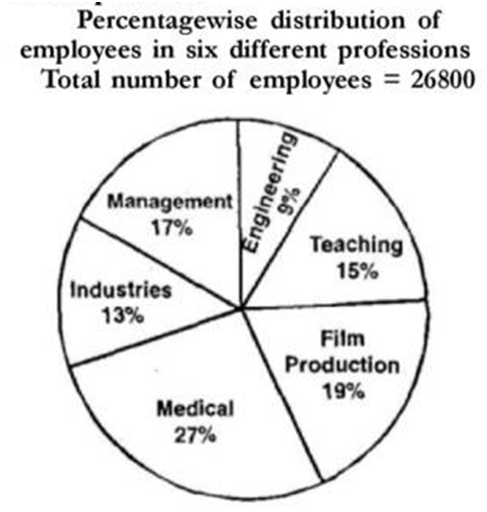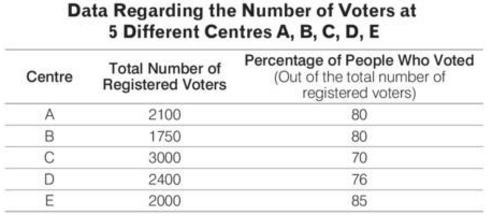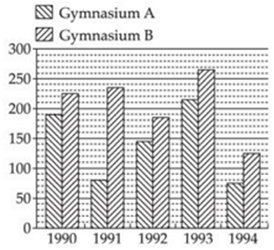
SBI Probationary Officer Recruitment Preliminary Examination Held on July 3, 2016
Part I English Language
Directions (Q. Nos. 1-5) Rearrange the given six sentences/group of sentences A, B, C, D, E and F in a proper sequences as to form a meaningful paragraph and then answer the given questions.
A. Apart from these, the care provided in these facilities is also not up to the mark.
B. For instance, in 2015, there was one government hospital bed for every 1833 people compared with 2336 persons in decade earlier which is a good sign.
C. India has made strides in the expansion of public services.
D. For example, six out of every then hospitals in the less developed States did not provide intensive care and a quarter of them struggled with issues like sanitation and drainage.
E. For instance, there is one government hospital bed for every 614 people in Goa compared with one every 8789 people In Bihar.
F. However, as Lancet points out, this availability of beds has been inequitably distributed within the country.
1. Which of the following should be the First sentence after rearrangement?
(a) A
(b) C
(c) B
(d) F
(e) E
2. Which of the following should be the Fifth sentence after rearrangement?
(a) A
(b) D
(c) E
(d) F
(e) C
3. Which of the following should be the Second sentence after rearrangement?
(a) A
(b) B
(c) F
(d) D
(e) E
4. Which of the following should be the Fourth sentence after rearrangement?
(a) E
(b) B
(c) C
(d) F
(e) D
5. Which of the following should be the Sixth (Last) sentence after rearrangement?
(a) C
(b) B
(c) A
(d) D
(e) F
Directions (Q. Nos. 6-15) Read the following passage carefully and answer the given questions. Certain words/phrases are given in bold to help you locate them while answering some of the questions.
Most of the declarations of the fourth World Conference on Women in Beijing in 1995 have faded from memory. But the linkage made there between women’s rights and poverty and the assumption that discrimination actually impedes progress-has survived.
Since then the promotion of equal rights has become a central economic priority for international aid agencies. The World Bank has declared the enfranchisement of women the single most important issue for effective development. A sweeping statement, perhaps, but since 1805 the bank has lent billions of dollars on programmes that encourage girls’ education, better maternal health and on micro-credit initiatives that funnel money directly into the hands of women. This is a substantial sum dedicated to women. If not, most developing countries, women produce more food than men and bear primary responsibility for feeding, sheltering and educating the young. But lack of education coupled with social customs which treat women as second-class citizens restrict their participation in the economy.
The figures are starting. Globally those women who do work are concentrated at the bottom end of the labour market and receive far less p ay. A significant proportion of the world’s illiterate are women and women account for half of all refugees. Anything that helps women catch up with men should be welcome on grounds of equity alone. But fairer treatment of women is also one of the most effective ways to improve an economy’s efficiency as well. It is widely recognized educating more women in developing countries and specifically making education available to men and women equally, is likely to raise the productive potential of an economy significantly. As education levels rise, so do household incomes.
In Sub-Saharan Africa, for instance, 70% of young children, whose mothers have secondary information receive their vaccinations, as opposed to just 30% of those, whose mothers have no formal schooling at all. A cross-country analysis concluded that gains in women’s education made the single largest contribution to declines in malnutrition in 13 countries between 1970 and 1995. Some researchers reckon that, if female farmers in places like Cameroon or Kenya were afforded the same schooling and other opportunities as male farmers, crop yields would rise quite hefty.
One economic analysis estimates that, if countries in South Asia. Africa and the middle-East had closed the gender gap in schooling at the same rate as East Asia after 1960, income per head could have grown substantially over the actual growth rates achieved. But one country’s gender bias is another’s ancient tradition, entrenched in laws and institutions. Some South American countries, like Bolivia and Guatemala restrict wives employment outside the home, in South African nations like Botswana, women have no independent right to manage of own land but now girls are offered stipends for secondary education, a long standing programme now holstered by multilateral aid.
Elsewhere in Africa in Ghana, peripatetic bankers act as lenders and financial advisors, often helping women as particular to set-up small businesses. Part of the rationale for micro-finance (small icons) that caters to women is the some studies have shown women tend to spend money more prudently on vital goods and services that benefit families, men often squander it. This finding may seem implausible to many men. Not any women would be surprised.
6. Which of the following is an appropriate title for the passage?
(a) Enabling Asia-The long Road Ahead
(b) Catching Lip with Africa
(c) Raising Children in the 21st Century
(d) Poverty-A Matter of Geography
(e) Gender Fairness Equals Economic Development
7. Which of the following is/are (a) hindrance(s) in the economic development of the countries mentioned in the passage?
A. Time-honoured traditions in these countries.
B. Women’s limited access to education.
C. Population explosion in the 1960s.
(a) Only A
(b) Only B
(c) All A, B and C
(d) A and C
(e) A and B
8. What do the statistics in the passage indicate?
(a) The female infanticide rate in African countries has dropped significantly.
(b) Maternal health and life expectancy of women has improved since 1995.
(c) Education of mothers has improved health and immunization in Sub-Saharan Africa.
(d) Much of the World Bank aid for health has been utilized effectively.
(e) Economic development in Africa is on the rise.
9. Which of the following best describes the author’s opinion regarding international aid efforts?
(a) These have been ineffective on account of rampant corruption in aided countries.
(b) Aid will soon dry up as donors are facing economic troubles of their own.
(c) Aid should be withdrawn from countries which do not promote equal opportunities.
(d) The goals are unrealistic as many of aided countries are facing political conflicts.
(e) These are generous, but effectiveness is hampered by prevailing local factors.
10. Choose the word/group of words which is most nearly the same in meaning as the word ‘Faded’ given in bold as used in the passage?
(a) Tainted
(b) Disappeared
(c) Darkened
(d) Drooped
(e) Deepened
11. Choose the word/group of words which is most nearly the same in meaning as the word ‘Funnel’ is given in bold as used in the passage?
(a) Cooked
(b) Available
(c) Subjects
(d) Pampers
(e) Plans
12. Which of the following is true in the context of the passage?
(a) Women in Asia & Africa have access to primary, but not higher education.
(b) International conferences on gender equality have not resulted in any concrete aid and action.
(c) There has been much focus on the issue of gender equality in the past two decades.
(d) Over half the women in Sub-Saharan Africa are illiterate.
(e) All of the given statements are true in the context of the passage.
13. Choose the word which is most opposite in meaning to the word ‘Fairer’ given in bold as used in the passage.
(a) Dimmer
(b) Mysterious
(c) Depressing
(d) Biased
(e) Dusty
14. Choose the word which is most opposite in meaning to the word ‘Implausible’ given in bold as used in the passage.
(a) Questionable
(b) Open
(c) Hypocritical
(d) Credible
(e) Fake
15. According to the passage, what can be said with regard to Africa?
(a) It is struggling to improve the situation with regard to discrimination against women.
(b) While cultural attitudes are changing fast, gender equal policies lag behind.
(c) Today there is parity between men and women in terms of property rights.
(d) Micro-credit programmes here have not enjoyed the same success as they did in Asia.
(e) None of the given options can be said.
Directions (Q. Nos. 16-20) Each sentence has two blanks, each blank indicating that something has been omitted. Choose the set of words for the blanks, which best fits the meaning of the sentence as a whole.
16. There is no clear ………. as to why so many companies start at the same time with broadly the ………. ideas.
(a) signal; aloof
(b) indication; same
(c) explanation; related
(d) clues; equal
(e) prove; like
17. Everything from our plastic water bottles and cosmetics to our non-stick frying pans, ………..
(a) has; stays
(b) contains; accumulate
(c) produces; dissolves
(d) have; dilute
(e) comprises; harm
18. Doctors-in training …………… a lot about the workings of the human body ………. medical school and residency.
(a) acquire; while
(b) receives; throughout
(c) study; for
(d) trained; from
(e) learn; during
19. There is a common ……… that runs …………. many of these ventures.
(a) fiber; on
(b) cord; by
(c) wired; between
(d) stand; next
(e) thread; through
20. World economic growth, which was anyway …….. will be further dampened ……. to Brexit.
(a) stumbling; thank
(b) gloom; owing
(c) low; as
(d) sputtering; due
(e) slowed; now
Directions (Q. Nos. 21-25) Read each sentences to find. Out whether there is any grammatical error in it. The error, if any, will be in one part of the sentence. Mark the part with the error as y our answer. If there is no error, mark ‘No error’ as your answer. (Ignore the errors of punctuation, if any).
21. The progress of the South-West monsoon/is relatively slow as it is/not getting as favourable system/for move forward.
(a) The progress of the South-West monsoon
(b) is relatively slow as it is
(c) not getting a favourable system
(d) for move forward
(e) No error
22. Authorities have/denied requests/for private hospital care/to the accuse.
(a) Authorities have
(b) denied requests
(c) for private hospital care
(d) to the accuse
(e) No error
23. The drive intended to creating/an awareness of/the perks of riding two wheelers/without a helmet.
(a) The drive intended to creating
(b) an awareness of
(c) the perks of riding two wheelers
(d) without a helmet
(e) No error
24. Gold continued its rising streak/for the fourth straight session/to reclaim the/psychologically significant thirty thousand mark.
(a) Gold continued its rising streak
(b) for the fourth straight session
(c) to reclaim the
(d) psychologically significant thirty thousand mark
(e) No error
25. The system, which keeps/a record for personal and professional details/of all community members/was hacked.
(a) The system, which keeps
(b) a record for personal and professional details
(c) of all community members
(d) was hacked
(e) No error
Directions (Q. Nos. 26-30) In the following passage there are blanks, each of which has numbered. These numbers are printed below the passage and against each five words are suggested, one of which fits the blank appropriately. Find out the appropriate word in each case.
Technology is the technical (26) people use to (27) their surroundings. It also means knowledge of using tools and machines to do tasks (28). We use technology to control the world in which we live. Technology is people using knowledge, tools, and systems to make their fives easier and better. People use technology to refines their ability to do work. (29) technology, people communicates better. Technology allows them to make more and better products. Our buildings are better through the use of technology. We travel in more comfort and speed as a (30) of technology. Yes, technology is everywhere and can make life better.
26.
(a) data
(b) manpower
(c) sound
(d) humans
(e) means
27.
(a) relate
(b) capture
(c) improve
(d) grow
(e) built
28.
(a) locally
(b) centrally
(c) efficiently
(d) deeply
(e) vaguely
29.
(a) Through
(b) Without
(c) Since
(d) Help
(e) Although
30.
(a) source
(b) result
(c) matter
(d) precursor
(e) fortune
Part II Reasoning
Directions (Q. Nos. 31-35) In these questions, relationship between different elements is shown in the statements. These statements are followed by conclusions. Study the conclusions based on the given statement(s) and select the appropriate answer.
Give answer
a. if only I is true b. if only II is true
b. if both are true d. if both are false
c. if either I or II is true
31. Statements G ≥ R > O ≥ S; Y < O ≤ F
Conclusion I. G > Y II S ≤ F
32. Statement W ≥ I = P > E ≥ S
Conclusions I. S < W II. S = W
33. Statement R ≤ C ≤ J = T ≤ P > Q ≥ H
Conclusions I. R < P II. P = R
34. Statements R ≤ O < A ≤ M; L = D ≥ A
Conclusions I. R < L II. D > O
35. Statement R ≤ C ≤ J = T ≤ P > Q ≥ H
Conclusions I. H > T II. C ≤ Q
Directions (Q. Nos. 36-41) Study the following information and answer the given questions.
Seven people, namely C, D, E, F, G, H and I like different cities namely, Surat, Kolkata, Bengaluru, Mumbai, Ranchi, Delhi and Pune. Each of them studies in either of three schools viz. DAS, RIS and VCS with at least two of them in a school.
(Note : None of the information given is necessarily in the same order.)
F studies with the one who likes Bengaluru in RIS. The one who likes Delhi studies only with H. H does not like Bengaluru. C studies with those who like Surat and Pune. C does not study with F. E studies with the one who likes Mumbai. The one who like Mumbai does not study with the one likes Delhi. More than one person studies with D. D does not like Pune. Both I and the one who likes Ranchi study in the same school, but not in DAS. H does not like Ranchi.
36. Which of the following combinations represents the school in which E studies and the city the likes?
(a) DAS-Bengaluru
(b) RIS-Bengaluru
(c) DAS-Kolkata
(d) VCS-Pune
(e) RIS-Delhi
37. Which of the following cities does G like?
(a) Pune
(b) Ranchi
(c) Mumbai
(d) Delhi
(e) Surat
38. Four of the following five are alike in a certain way as per the given arrangement and hence form a group. Which of the following does not belong to that group?
(a) DE
(b) CI
(c) HG
(d) FE
(e) HI
39. Who amongst the following likes Kolkata?
(a) F
(b) H
(c) I
(d) C
(e) D
40. Which of the following combinations represents the combination of people studying in VCS?
(a) The one who likes Delhi and Bengaluru.
(b) The one who likes Ranchi and Mumbai.
(c) The one who likes Delhi, Mumbai and Kolkata.
(d) The one who likes Pune, Surat and Mumbai.
(e) The one who likes Surat, Pune and Ranchi.
41. Which of the following statements is not true?
(a) F studies in the same school in which I studies.
(b) Both D and C study in the same school.
(c) G studies with only the one who likes Kolkata.
(d) C likes Ranchi.
(e) All of the given statements are true.
Directions (Q. Nos. 42-44) Study the following information and answer the given questions.
D is the mother of S. S is the sister of T. T is the mother of R. R is the only son of J. J is the father of U. U is married to K.
42. How is J related to D?
(a) Brother-in-law
(b) Son-in-law
(c) Grandson
(d) Son
(e) Nephew
43. If R is the father of X, then how is K related to X?
(a) Father
(b) Aunt
(c) Uncle
(d) Father-in-law
(e) Mother
44. How is S related to R?
(a) Sister-in-law
(b) Mother-in-law
(c) Grandmother
(d) Aunt
(e) Mother
Directions (Q. Nos. 45-49) Study the given information carefully to answer the given questions.
Seven boxes J, K,, L, M, N, O and P are kept one above the other, but not necessarily in the same order. Each box contains different elements – Cookies, Pencils, Spoons, Diaries, Colours, Jewellery and Watches, but not necessarily in the same order.
Only two boxes are kept between M and N. The Pencil box is kept immediately below M. Only two boxes are kept between the Pencil box and the Watch box. N is kept above the Watch box. The Diary box is kept immediately below the Watch box.
Only three boxes are kept between the Diary box and J. The Jewellery box is kept immediately above the J. O is kept immediately above K. O is not Pencil box. P is kept immediately below the Cookies box. Only one box is kept between the P and the Spoon box.
45. Which of the following boxes is kept immediately above M?
(a) P
(b) O
(c) L
(d) Diary box
(e) Jewellery box
46. What is the position of O in the given stack of boxes?
(a) First from top
(b) Second from top
(c) Third from bottom
(d) Fifth from bottom
(e) Fourth from top
47. Which of the following boxes contains Spoons?
(a) Other than those given as options
(b) K
(c) M
(d) N
(e) L
48. Four of the following five are alike in a certain way and hence form a group. Which of the following does not belong to the group?
(a) N-Diaries
(b) P-Spoons
(c) O-Colours
(d) K-Pencils
(e) M-Jewellery
49. How many boxes are kept between K and the Watch box?
(a) More than three
(b) None
(c) Three
(d) One
(e) Two
Directions (Q. Nos. 50-54) Study the following information and answer the given questions.
Eight friends A, B, C, D, L, M, N and O are seated in a straight line, but not necessarily in the same order. Some of them are facing North while some are facing South. Only three people sit to the left of N. B sits second to the right of N. C cists third to the left of O. O is not an immediate neighbour of B. O does not sit at any of the extreme ends of the line. C and O face same direction (i.e. if C faces North then O also faces North and vice-versa.) Both the immediate neighbours of D face North. D does not sit at any of the extreme ends of the line. Person sitting at extreme ends face opposite directions (i.e. if one person faces North then the other faces South and vice-versa.) Both the immediate neighbours of N face same directions (i.e. if one neighbour faces North then the other also faces North and vice-versa.) A sits second to the left of L. D faces a direction opposite to L. (i.e. if L faces North then D faces South and vice-versa.)
50. How many people sit exactly between B and O?
(a) More than four
(b) One
(c) Two
(d) Four
(e) Three
51. Who among the following represent the immediate neighbours of the persons sitting extreme ends of the line?
(a) D, O
(b) C, D
(c) D, M
(d) A, L
(e) A, M
52. Who amongst the following faces North?
(a) A
(b) L
(c) O
(d) N
(e) C
53. Which of the following is true based on the given arrangement?
(a) B and C face the same directions.
(b) None of the given options is true.
(c) B faces South.
(d) Only three people face South.
(e) M sits at one of the extreme ends of the line.
54. Who amongst the following sits second to the right of C?
(a) A
(b) No one as only person sits to the right of C.
(c) M
(d) B
(e) L
Directions (Q. Nos. 55-56) Read the following information and answer the given questions.
Point J is 20 m to the North of Point G. Point G is 10 m to the West of Point K is 15 m to the South of Point L. Ashish is standing at Point T which is 30 m to the East of Point L. He starts walking towards South and walks for 35 m. He takes a right turn and stops at Point M after walking for 40 m.
55. How far and in, which direction is Point G with respect to Point M?
(a) 15 m towards South
(b) 15 m towards West
(c) 20 m towards South
(d) 15 m towards North
(e) 20 m towards North
56. If Ashish walks for 10 m towards North from his final position to reach Point D, how much distance will he have to cover in order to reach Point J?
(a) 10 m
(b) 35 m
(c) 25 m
(d) 20 m
(e) 30 m
Directions (Q. Nos. 57-59) Read the given information carefully and answer the given questions.
Each of the six friends, I, J, K, L, M and N working in an office handles different number of projects in a month. I handled the second lowest number of projects. K handles more projects than L and M, but less than J. J did not handle the maximum number of projects. L did not handle the minimum number of projects. The one who handle the third highest number of projects handled 31 projects. L handled 12 projects.
57. How many projects did J possibly handle?
(a) 28
(b) 10
(c) 36
(d) 9
(e) 15
58. If the number of projects handled by I + M is only three more than number of projects handled by L, how many projects were handled by I?
(a) 22
(b) 14
(c) 19
(d) 9
(e) 32
59. Which of the following is true regarding the number of projects handled by N?
(a) No one handled more projects than N.
(b) Only J handled more number of projects than N.
(c) N possibly handled 24 projects.
(d) N handled more number of projects than only three people.
(e) The difference between projects handled by N and L is less than 18.
Directions (Q. Nos. 60-65) Study the following information and answer the questions.
Seven people, namely K, L, M, N, O, P and Q have to attend a concert, but not necessarily in the same order, on seven different months (of the same year) namely January, February, April, May, June, September and November. Each of them also likes a different movie namely X-Men, Transformers, Frozen, Minions, Shrek, Tangled and Rio, but not necessarily in the same order.
M will attend a concert in a month, which has 31 days. Only two people will attend a concert between M and the one who likes Frozen. The one who likes Frozen will attend a concert on one of the months after M. Only two people will attend a concert between the one who likes Frozen and the one who likes Transformers. The one who likes Transformers will attend a concert in a month which has 31 days. K will attend a concert immediately after M. Only three people will attend a concert between K and the one who likes Tangled. Only one person will attend a concert between the one who likes Tangled and L. Only two people will attend a concert between L and the one who like Rio. The one who likes X-Men will attend a concert immediately before the one who likes Shrek. Only one person will attend a concert between the one who likes Shrek and P. Only three people will attend a concert between Q and O. Q will not attend a concert in a month which has 30 days.
60. Who amongst the following likes X-Men?
(a) M
(b) K
(c) O
(d) L
(e) Q
61. How many people will attend a concert after M?
(a) More than three
(b) One
(c) None
(d) Two
(e) Three
62. Which of the following represents the people who will attend a concert immediately before and immediately after O?
(a) M, N
(b) K, L
(c) L, N
(d) P, N
(e) N, M
63. As per the given arrangement January is related to Q and May is related to K following a certain pattern, which of the following is April related to following the same pattern?
(a) P
(b) O
(c) M
(d) L
(e) N
64. Which of the following represents the month in which K will attend a concert?
(a) September
(b) June
(c) November
(d) April
(e) Cannot be determined
65. Who amongst the following likes Minions?
(a) M
(b) L
(c) P
(d) Other than those given as options
(e) K
Part III Quantitative Aptitude
66. The cost price of item B is Rs 150 more than the cost price of item A, A was sold at a profit of 10% and item B was sold at a loss of 20%. If the respective ratio of selling price of items A and B is 11 : 12, what is the cost price of item B?
(a) Rs 450
(b) Rs 420
(c) Rs 400
(d) Rs 350
(e) Rs 480
67. A vessel contains a mixture of milk and water in the respective ratio of 10 : 3. Twenty-six litres of this mixture was taken out and replaced with 10 L of water. If the resultant respective ratio of milk and water in the mixture was 5 : 2, what was the initial quantity of mixture in the vessel?
(a) 143 L
(b) 182 L
(c) 169 L
(d) 156 L
(e) 130 L
Directions (Q. Nos. 68-72) What approximate value will come in place of the questions marks in the given questions? (You are not expected to calculate exact value)
68. ?% of 750.11 ×90 + 6.995 = 30000
(a) 100
(b) 80
(c) 35
(d) 75
(e) 60
69. 002 + 29.98 – 53.998 + 3.012 = ?
(a) 800
(b) 880
(c) 840
(d) 900
(e) 750
70. 1% of 360.2 + 58.98% of ? = 1244
(a) 1800
(b) 1840
(c) 1865
(d) 1870
(e) 1900
71. 894 + 33.002 + 15.02 × 7.99 = ?
(a) 180
(b) 123
(c) 140
(d) 250
(e) 170
72. (42.11 ×006) – √17 × 15.08 = ?
(a) 250
(b) 150
(c) 45
(d) 200
(e) 125
73. There are 6 consecutive odd numbers. The difference between the square of the average of last three numbers and the first three numbers is 288. What is the lass odd number?
(a) 31
(b) 27
(c) 29
(d) 25
(e) 33
74. In a bag there are 6 red balls and 9 green balls. Two balls are drawn at random, what is the probability that at least one of the balls drawn is red?
(a) 29/35
(b) 7/15
(c) 23/35
(d) 17/35
(e) 19/35
Directions (Q. Nos. 75-77) Refer to the bar graph and answer the given questions.
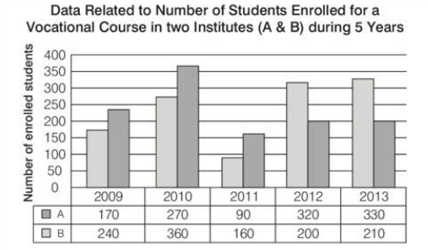
75. What is the difference between average number of students enrolled in institute A in 2009 and 2010 and that in institute B in 2011 and 2012?
(a) 20
(b) 40
(c) 30
(d) 10
(e) 60
76. If the number of enrolled students in institute A in 2013 is 25% less than that in 2014, how m any students were enrolled in institute A in 2014?
(a) 450
(b) 480
(c) 440
(d) 430
(e) 415
77. In 2009, 65% of students enrolled in institute B were male. If the respective ratio between number of male students enrolled in institutes A and B in 2009 was 3 : 4, what was the number of male students enrolled in institute A in the same year?
(a) 111
(b) 117
(c) 123
(d) 114
(e) 105
78. Number of students enrolled in institute A in 2011 is, what percent of that enrolled in institute B in the same year?
(a) 50.75%
(b) 60.25%
(c) 58.5%
(d) 54.75%
(e) 56.25%
79. Number of students enrolled in institute B decreased by what percent from 2010 to 2013?
(a) ![]()
(b) ![]()
(c) ![]()
(d) ![]()
(e) ![]()
80. A is thrice as efficient as B. A started working and after 4 days he was replaced by B. B then worked for 15 days and left. If A and B together finished 75% of the total work, in how many days B alone can finish the whole work?
(a) 27 days
(b) 45 days
(c) 24 days
(d) 36 days
(e) 42 days
81. Raman invested Rs P for 2 years in scheme A which offered 20% per annum compound interest (compounded annually). He lent the interest earned from scheme A to Shubh, at the rate of 7.5% per annum simple. If at the end of 2 years, Shubh gave Rs 3036 to Raman and thereby repaid the whole amount (actual loan + interest), what is the value of P?
(a) Rs 6000
(b) Rs 5800
(c) Rs 6800
(d) Rs 5400
(e) Rs 6400
Directions (Q. Nos. 82-86) Study the following table carefully and Answer the given questions.
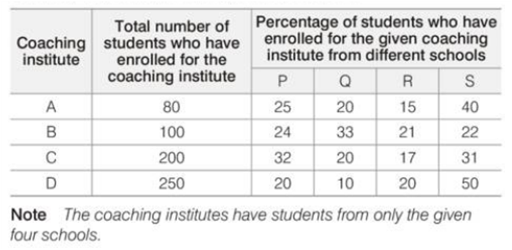
82. What is the respective ratio between total number of students who have enrolled for coaching institutes A and C together from school P and the total number of students who have enrolled for the same coaching institutes together from school Q?
(a) 9 : 4
(b) 3 : 1
(c) 6 : 5
(d) 3 : 2
(e) 7 : 2
83. In coaching institute B, the total number of students who have enrolled from schools P and R together is, what percent less than the total number of students enrolled from schools Q and S together?
(a) ![]()
(b) ![]()
(c) ![]()
(d) ![]()
(e) ![]()
84. What is the average number of students who have enrolled in coaching institutes A, C and D from school R?
(a) 32
(b) 33
(c) 34
(d) 31
(e) 30
85. What is the difference between the total number of students who have enrolled from coaching institute A from schools P and S together and the total number students who have enrolled for coaching institute C from the same school together?
(a) 78
(b) 64
(c) 38
(d) 74
(e) 67
86. In coaching institute D, 42% are females. If 20% of the total females are from school Q, what is the number of male students from school Q who have enrolled from coaching institute D?
(a) 5
(b) 7
(c) 6
(d) 3
(e) 4
Directions (Q. Nos. 87-91) In these questions, two equations numbered I and II given. You have to solve both the equations and mark the appropriate option.
Give answer
a. if x > y b. if x < y
c. if x ≥ y d. if x ≤ y
e. if x = y or relation between x and y cannot be established
87 I. x2 – 11x + 30 = 0 II. 2y2 – 9y + 10 = 0
88. I. 15x2 + 8x + 1 = 0 II. 3y2 + 14y + 8 = 0
89. I. 4x2 – 17x + 18 = 0 II. 2y2 – 21y + 40 = 0
90. I. 6x2 – 25x + 14 = 0 II. 9y2 – 9y + 2 = 0
91. I. 8x2 + 25x + 3 = 0 II. 2y2 + 17y + 30 = 0
Directions (Q. Nos. 92-96) What will be come in the place of question marks in the following numbers series?
92. 250 235 205 160 ? 25
(a) 110
(b) 150
(c) 75
(d) 100
(e) 120
93. 20 ? 29 40 58 85
(a) 23
(b) 25
(c) 27
(d) 31
(e) 24
94. 5 7 17 55 225 ?
(a) 971
(b) 1131
(c) 1253
(d) 1435
(e) 956
95. 10 6 8 15 34 ?
(a) 95
(b) 80
(c) 90
(d) 75
(e) 85
96. 85 53 33 22 17 ?
(a) 5
(b) 9
(c) 10
(d) 8
(e) 15
97. A started a business by investing Rs 25000. At the end of 4th month from the start of the business B joined with Rs 15000 and at the end of 6th month from the start of the business, C joined with Rs 20000. If the A’s share in profit at the end of year was Rs 7750, what was the total profit received?
(a) Rs 13950
(b) Rs 13810
(c) Rs 13920
(d) Rs 12780
(e) Rs 14040
98. The respective ratio of radii of two right circular cylinders (A & B) is 2 : 3. The respective ratio of volumes of cylinders A and B is 9 : 7, then what are the ratio of heights of cylinders A and B?
(a) 8 : 5
(b) 81 : 28
(c) 7 : 6
(d) 5 : 4
(e) 6 : 5
99. Suri gave 25% of her monthly salary to her mother. From the remaining salary, she paid 15% towards rent and 25%, she kept aside for her monthly expenses. The remaining amount she kept in bank account. The sum of the amount she kept in bank and that she gave to her mother was Rs 42000. What was her monthly salary?
(a) Rs 50000
(b) Rs 60000
(c) Rs 65000
(d) Rs 64000
(e) Rs 72000
100. At present, Ami’s age is twice Rio’s age and Cami is two years older than Ami. Two years ago, the respective ratio between Rio’s age at that time and Cami’s age at that time was 4 : 9. What will be Ami’s age after four years?
(a) 40 yr
(b) 30 yr
(c) 42 yr
(d) 36 yr
(e) 48 yr






